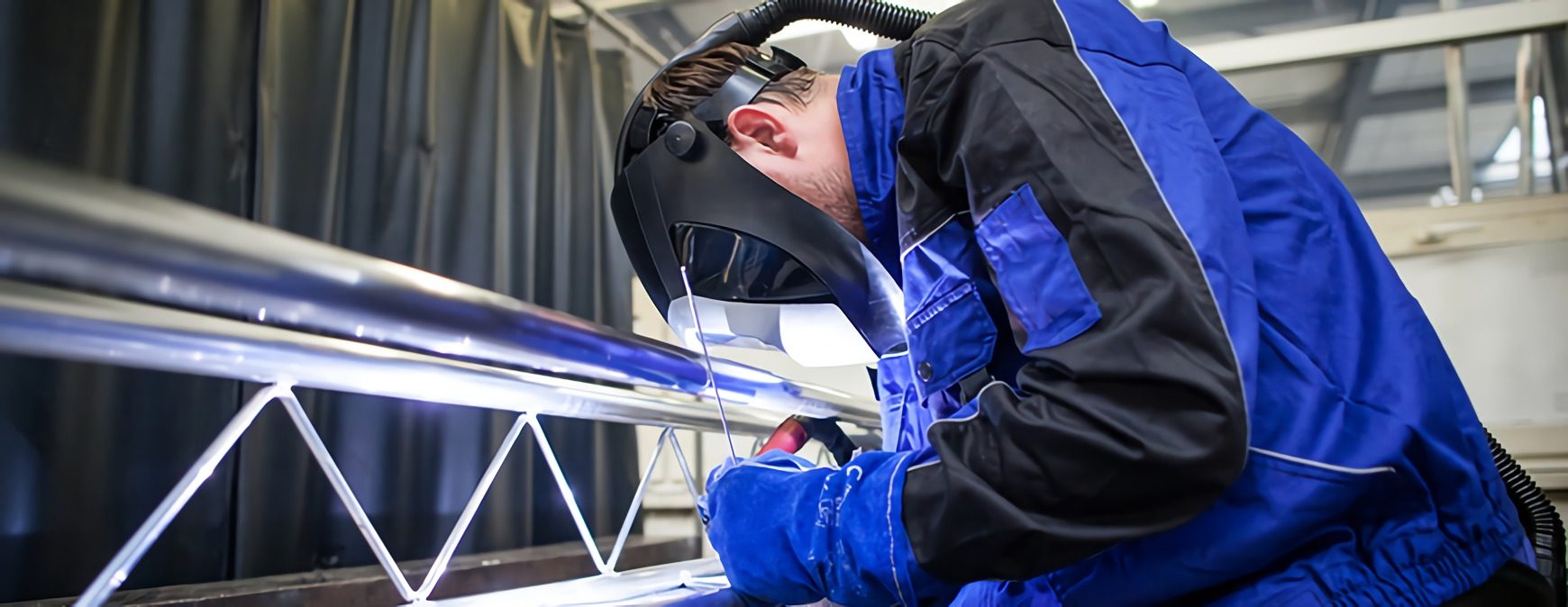TWS is a Great Training Option for Everyone
Learn more about how we can prepare you to advance your career.
Every product that is welded has to meet the codes and standards for strength, quality and reliability.
So why do some welds fail? The truth is that all welds have flaws, or discontinuities, but some have so many that they fail quality assurance tests and are ultimately considered. Welding discontinuities should be taken seriously because they can render all of the time, effort and energy you put into a weld completely pointless.
What Is the Definition of Welding?
Interruptions or flaws in the physical, mechanical or metallurgical properties of a weld are called discontinuities.
The number or extent of the discontinuities that is acceptable for a given product depends on its standards. More discontinuities would be permissible for a welded gate than for an airplane, for instance, because the latter is subject to much more critical usage. Lives could be lost if the welds in a plane failed.
Have You Considered a Career in the Skilled Trades?
Fill out the form to recieve a no obligation info packet.
What Is the Difference Between Defect and Discontinuity?
When a product has more discontinuities than its code of standards allows, the product is deemed defective and unfit for use.
How does an organization know when a product has crossed the line from having discontinuities to being defective? A measurement called tolerance is used.
Tolerance is the difference between the ideal, or perfect, version of the product and a version of the product that is still fit for use despite its discontinuities. Other factors that determine if a product’s discontinuities are great enough to be categorized as defects are the size, location and type of the discontinuity.[1]
What Are Some Common Welding Discontinuities?
Below are six common welding discontinuities, along with their possible causes. If these discontinuities surpass a given product’s standards, they are defects.
1. Porosity
Porosity occurs when gas becomes trapped in the weld pool, forming permanent bubbles as the metal cools from a liquid state back to a solid. Extensive porosity can result in a loss of weld strength.
Causes
- Failing to properly shield the weld from atmospheric contamination
- Neglecting to remove impurities like dirt from the base metal
- Striking too long of an arc
2. Inclusions
Inclusions occur when slag, oxides or other nonmetallic materials become trapped between the bases metal and the weld, between the beads of the weld or in the weld metal. The structural integrity of the weld can be compromised by the presence of inclusions.
Causes
- Leaving heavy mill scale, rust, or preexisting deposits of slag in the material
- Improperly cleaning prior welds
- Manipulating the arc incorrectly
3. Inadequate Joint Penetration
When a weld does not penetrate the joint enough to achieve a sound fusion of the metals, the problem can be described as an inadequate joint penetration. This discontinuity becomes a defect when it serves as a source of stress in the weld that can result in fatigue failure.
Causes
- Misdirecting the arc or other improper welding techniques
- Not preheating thick metals or using enough welding current to penetrate the joint
- Poor design, fit, or detail of the joint
4. Incomplete Fusion
Two types of incomplete fusion can happen: interpass cold lap and lack of sidewall fusion.
- Interpass cold lap is when the filler metal and previously deposited weld metal do not fuse sufficiently.
- Lack of sidewall fusion is when the joint face and weld metal fail to fuse properly.
Causes
- Leaving slag or oxides on joint surfaces or neglecting to break up oxide layers on the base or filler metals
- Traveling at an improper speed or using the wrong electrode angle
- Selecting the wrong welding process for the metal
5. Arc Strikes
When the arc strikes areas other than the joint, it melts the metal and causes small, localized discontinuities in its surface. They can serve as the starting point for cracking and dangerous fatigue failure.[2]
Causes
- Improper or careless technique that causes the arc to strike the wrong location
- Defective ground connections.
6. Overlap
Weld deposits that flow over the surface of the base metal because they are larger than the specified joint design are referred to as overlap. They can prevent the metals from fusing.
Causes
- Traveling too slowly
- Misdirecting the arc
- Improperly sizing the weld[3][4]
H2: Welding Quality Assurance Enforces Productivity and Safety
While no weld is perfect, all welds must be fit for the service they’ll be placed in. One of the biggest parts of the welder’s job is to make sure their work is safe for the public. Another is making the time and energy that goes into the project worth it.
Learn more about welding inspections and how they test the quality of welds.
[1] – Title: Welding Principles and Applications; Author: Larry Jeffus; Delmar Cengage Learning; Seventh Edition; Textbook page 567-568
[2] – http://www.thefabricator.com/article/arcwelding/arc-welding-discontinuities
[3] – http://www.lincolnelectric.com/assets/us/en/literature/wc514.pdf
[4] – Title: Welding Principles and Applications; Author: Larry Jeffus; Delmar Cengage Learning; Seventh Edition; Textbook page 568-573
This blog has been labeled as archived as it may no longer contain the most up-to-date data. For a list of all current blog posts, please visit our blog homepage at https://www.tws.edu/blog/







